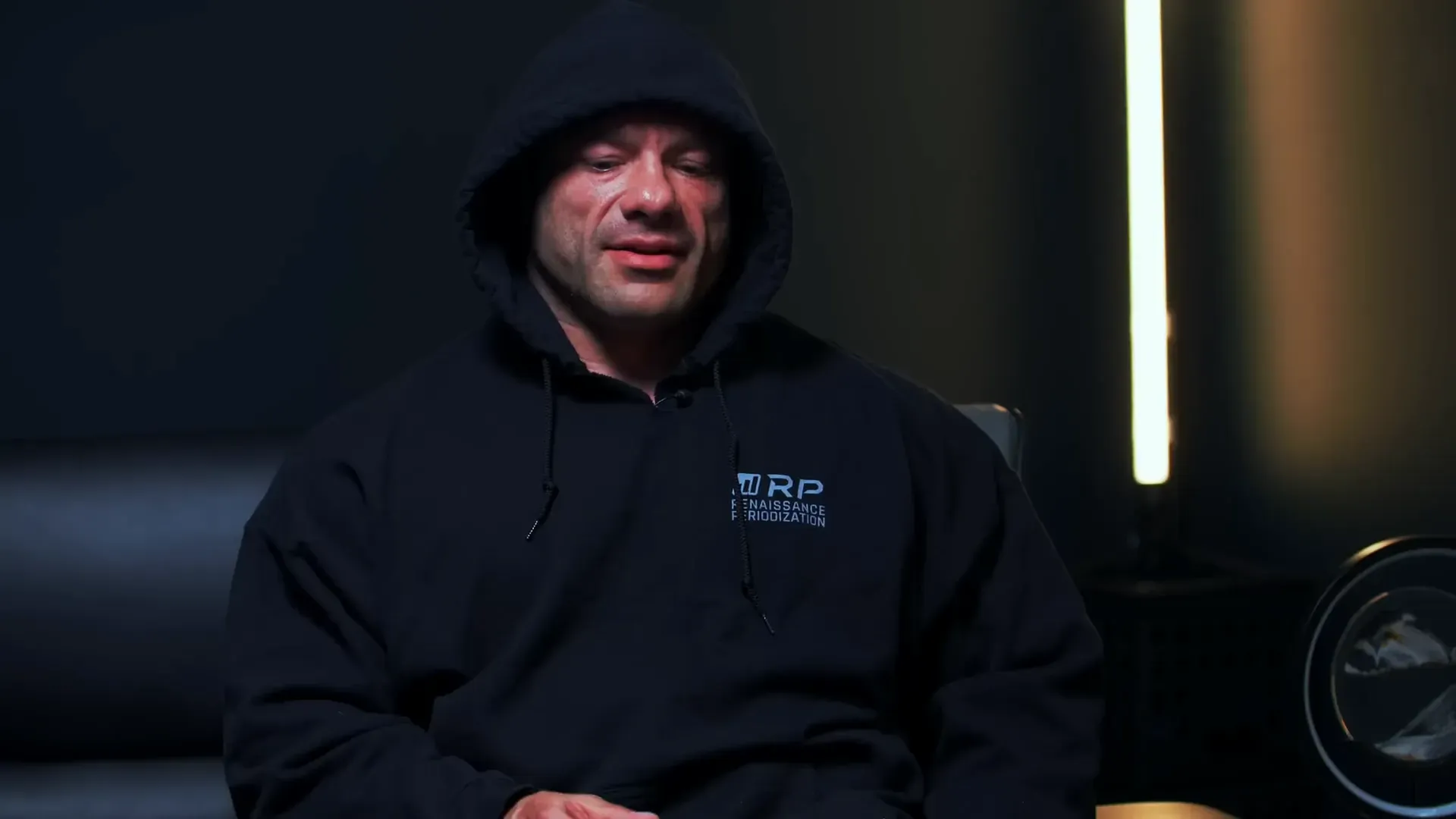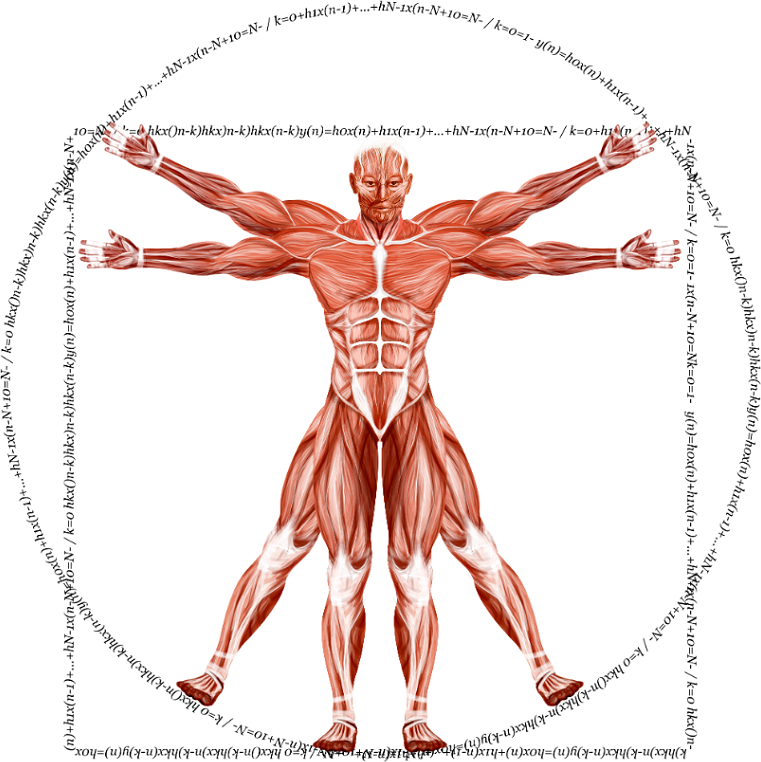15 Best Exercises for Muscle Growth [Science-Backed]
Discover the best and worst exercises for muscle gain, ranked by expert
![15 Best Exercises for Muscle Growth [Science-Backed]](/content/images/2025/04/dall-e-2024-03-28-21-53-03---generate-a-semi-realistic-watercolor-painting-of-a-muscular-individual-in-his-30s-doing-a-barbell-bench-press--the-painting-should-showcase-vibrant-ye-1-1-1.webp)
Key Takeaways
- Prioritize exercises like the dumbbell pullover and the barbell bench press to maximize muscle growth.
- Avoid exercises like the deadlift, which may offer limited muscle-building benefits for the fatigue they generate.
- Choose effective muscle-building exercises ranked for optimal muscle growth to ensure efficient, targeted training.
- Supplement with slightly less effective movements like hip thrusts and leg extensions to round out muscle activation.
Want to make sure you’re focusing on the best exercises for muscle growth?
This expert review analyses, critiques, and expands on Dr. Mike Israetel and Dr. Milo Wolf's exercise ranking for muscle growth. We break down which exercises deliver maximum muscle gains and which ones might fall short.
Why trust us? Our guide is carefully reviewed and fact-checked by experts, including a seasoned exercise scientist with over 20 years of gym experience. We add unique tips to help you build muscle, cut fat, and develop a balanced physique for better health and strength.
Read on for the full breakdown of Dr. Israetel’s rankings, plus insights to help you reach your fitness goals.
Related:
- Good Exercises for Muscle Gain: Expert Guide [In-depth]
- 20 Best Chest Exercises to Build Your Perfect Pecs
- 10 Best Bodybuilding and Hypertrophy Programs to Build Muscle [In-Depth Review]
In a Nutshell: Choosing the Right Exercises for Muscle Growth
Key recommendations include prioritizing top-tier exercises like the dumbbell pullover and barbell bench press for maximal muscle growth while avoiding less effective, high-fatigue movements like the deadlift.
Mix in B-tier options like hip thrusts and rear delt flys for a balanced approach to supplement your workout and target additional muscle groups.
Using this tiered ranking, you can structure a more efficient workout that aligns with your muscle-building goals, maximizing gains while reducing unnecessary fatigue.
| Key Concept | Main Insight |
|---|---|
| Tiered Exercise Ranking | Categorizes exercises from most effective (S-tier) to least effective (D-tier) for muscle gain. |
| Effective Exercise Choices | Prioritize S and A-tier exercises to maximize muscle engagement and growth. |
| Minimizing Fatigue | Limit D-tier exercises, such as the deadlift, to avoid excessive fatigue. |
| Versatile Exercise Selection | Use a mix of ranked exercises for hypertrophy to cover all muscle groups and avoid workout monotony. |
| Science-Based Approach | Recommendations are based on Dr. Mike Israetel’s expertise in hypertrophy training. |
Best and Worst Exercises for Muscle Gain

In the fitness realm, understanding exercise rankings can dramatically enhance your training strategy. Not every exercise contributes equally to muscle growth. By categorizing exercises into tiers, we can identify which ones provide the best results for hypertrophy.
This tier system ranges from S-tier, representing the best exercises, to D-tier, which indicates those that offer minimal benefits. This classification helps you prioritize your workouts. Focus on the exercises that maximize your muscle gains and avoid those that may hinder your progress.
Chest & Triceps
The Barbell Bench Press: A-Tier Exercise
The barbell bench press stands tall as an A-tier exercise. It effectively targets the pectoral muscles, especially when performed with proper form. This exercise offers a good range of motion, ensuring that your muscles engage fully throughout the movement.
With the barbell bench press, you can easily adjust your grip. This variation allows for closer or wider grips, catering to your personal comfort and muscle activation preferences. It's also relatively safe, especially when using a spotter, making it a staple in many strength training routines.
Incline Bench Press: Strong A-Tier Contender
The incline bench press is another strong A-tier exercise. This variation effectively targets the upper pectoral muscles. By adjusting the angle, you can focus on specific areas of the chest, which is essential for a well-rounded physique.
Similar to the flat barbell bench press, the incline version allows for various grip adjustments. This versatility enhances muscle engagement and helps prevent workout monotony. However, it's important to note that some individuals may struggle with the barbell movements due to shoulder or elbow discomfort, which can impact their performance.
Cable Crossover: C-Tier Choice
The cable crossover finds itself in the C-tier. While it can engage the chest muscles, it doesn't provide the same stimulus as other exercises. The crossover motion may not effectively target the inner fibers of the chest, leading to less overall muscle growth.
Many gym-goers find themselves confused about the proper technique for cable crossovers. Additionally, it often requires a full cable station, which can be hard to come by in busy gyms. Given these factors, it's clear that better options exist for chest training.
Dips for Chest: Mixed Bag
Dips for the chest can be a mixed bag, landing somewhere between C and B tier. While they can activate the chest, they also tend to heavily recruit the triceps. The effectiveness largely depends on your setup and technique.
If you use a standard dip bar, you may find that your triceps fatigue before your chest does. However, using an angled dip station can shift the focus back to the chest, especially if you adjust your body position. This adaptability makes dips a viable option, but they require careful execution to maximize benefits.
Overhead Extensions: A-Tier or S-Tier?
Overhead extensions are often debated as either an A-tier or S-tier exercise. They provide a unique opportunity to target the triceps while maintaining a good force curve. When performed correctly, they can lead to significant muscle engagement at the bottom of the movement.
This exercise is also convenient to pair with other movements, such as close-grip push-ups. This makes it an excellent choice for those looking to maximize their workout efficiency. However, some may find the rope attachment less effective, as it can lead to energy loss during the lockout phase. It's advisable to stick with bar attachments for better performance.
Shoulders
Shoulder Press: D-Tier Exercise
The shoulder press often gets a bad rap, and for good reason. It lands firmly in the D-tier category. Many people think of it as a go-to shoulder exercise, but it primarily targets the front delts and triceps. The side delts, which are crucial for shoulder aesthetics, get minimal engagement. This makes it less effective for the overall shoulder development most lifters seek.
Biomechanically, the shoulder press places the side delts in a disadvantaged position. The overhead movement doesn't recruit them effectively. Instead, it creates significant axial fatigue. Lifters often experience discomfort in the spine and other areas due to the heavy loads required. If you must do shoulder presses, consider doing them seated to reduce systemic fatigue.
Rear Delt Fly: B-Tier Exercise
Next up is the rear delt fly, which earns a solid B-tier ranking. This exercise can engage the rear delts effectively, but it's not the most efficient way to train them. Many lifters will already activate their rear delts during compound pulling movements. As a result, dedicated rear delt exercises may not be necessary for everyone.
While the rear delt fly can provide some benefits, it's crucial to recognize that it won't significantly enhance your rear delt development. Instead, focus on integrating it into a well-rounded back workout. Use it as a supplementary exercise rather than a primary one.
Barbell Front Raise: B-Tier Option
The barbell front raise is another exercise that finds itself in the B-tier. When executed correctly, it can target the side delts effectively, especially if you maintain a proper grip. Using a prone grip, with palms facing down, helps activate the side delts more than the traditional thumbs-up position.
However, the front raise does have its drawbacks. It tends to involve minimal tension at the lengthened position, which can limit its effectiveness. If you focus on good technique and control, it can still be a valuable addition to your shoulder workout. Just remember, it’s not the primary source of side delt training.
Back & Biceps
Machine Row: The God-Tier Choice
The machine row is a standout exercise, earning a coveted God-tier status. It offers a unique blend of stability and strength, making it an excellent choice for back training. With a chest support, it allows you to focus on your upper back without compromising your spine.
This machine provides an optimal stretch at the bottom and a solid contraction at the top. You can adjust the settings to find the perfect range of motion for your body. Furthermore, the handles can rotate, allowing for a variety of grips. This versatility ensures that you can find a comfortable position that maximizes muscle engagement.
Barbell Bent Over Row: A-Tier Exercise

Moving on to the barbell bent over row, this exercise firmly sits in the A-tier. It effectively targets multiple muscle groups, including the rhomboids, mid-back, and trapezius. When performed with the right technique, it provides a solid stimulus for overall back development.
To maximize the benefits, focus on strict form. Keep your torso stable while hinging at the hips. This method allows for a deep stretch and a strong contraction throughout the movement. While not the best for lat activation, it excels at engaging the mid-back and promoting a well-rounded physique.
Pull-Ups: A-Tier Staple
Finally, we have pull-ups, which are an essential A-tier exercise. They are a fantastic way to build strength and muscle in your back. The pull-up movement effectively targets the lats and provides an excellent eccentric stimulus. It can be performed with various grips, adding to its versatility.
One of the best aspects of pull-ups is their low axial fatigue. Unlike many other exercises, pull-ups stretch the spine, allowing you to perform multiple sets without excessive fatigue. This makes them a reliable choice for anyone looking to enhance their back development.
Dumbbell Pullover: S-Tier Exercise
The dumbbell pullover is an S-tier exercise. It not only targets the chest but also provides fantastic engagement for the lats. When performed correctly, it can lead to a remarkable mind-muscle connection, making it a favorite among many lifters.
To maximize the benefits, focus on your technique. Ensure you feel the stretch in your lats rather than just your chest. This minor adjustment can transform the pullover from a mediocre chest exercise to an essential lat builder. For those with mobility issues, Easy Bar pullovers are a great alternative.
Moreover, cable variations, like lat prayers, provide an excellent alternative. They maintain constant tension throughout the movement, which is crucial for muscle growth. The versatility of the pullover makes it a valuable addition to any workout routine.
Additionally, the dumbbell pullover is effective for the long head of the triceps. This often-overlooked aspect can add significant volume to your arm training. Overall, the dumbbell pullover stands out as a must-have exercise for anyone serious about hypertrophy.
Deadlift: D-Tier Exercise
The deadlift, despite its reputation, lands firmly in the D-tier. While it is often hailed as a cornerstone of strength training, it poses several challenges for hypertrophy. The systemic fatigue and psychological toll it takes can outweigh its benefits.
One of the biggest issues with deadlifts is the unclear target muscle. Is it the glutes, the lats, or the spinal erectors? This ambiguity makes it difficult to justify their place in a hypertrophy program. You might find yourself feeling the burn in your back without a clear understanding of what you're training.
Moreover, the deadlift creates substantial axial fatigue. The strain on the spine and the risk of injury are significant downsides. While it can build strength in certain muscles, there are far more efficient exercises to achieve similar results without the fatigue cost.
For hypertrophy, consider alternatives like Jefferson curls or flexion rows. These exercises can target similar muscles with less systemic fatigue. Ultimately, the deadlift may be a rite of passage for many lifters, but it should not dominate your training program.
Legs
Hip Thrust: B-Tier Exercise
The hip thrust earns a solid B-tier ranking. It serves as one of the few isolation movements for glutes, allowing for focused muscle engagement. This exercise can be technically mastered, leading to impressive glute activation when done correctly.
However, the hip thrust has its limitations. Most lifters perform it with both legs, which reduces the ability to stretch each glute individually. This can hinder overall glute development compared to more dynamic exercises like lunges.
Additionally, the setup and equipment can impact its effectiveness. Using specialized hip thrust machines can elevate its status, but many gyms lack these. If you're stuck using a barbell and bench, the setup can become cumbersome, leading to frustration.
Despite these drawbacks, the hip thrust remains a valuable exercise in a well-rounded routine. It can provide a break from compound movements and focus solely on glute activation. When paired with higher rep schemes, it can yield great results without excessive fatigue.
Leg Extensions: C-Tier Exercise

Leg extensions find themselves in the C-tier. They can be effective for targeting the quads, but they fall short in a comprehensive leg training program. Many lifters miss out on the full spectrum of quad development by relying solely on this exercise.
In many cases, leg extensions do not provide enough stretch for optimal muscle engagement. The movement often limits the range of motion, preventing full activation of the quads. If used as a standalone exercise, they may not yield the desired results.
However, when integrated into a broader workout that includes squats and lunges, they can serve as an excellent finishing touch. They can help isolate the quads after compound lifts. It's essential to adjust the machine for maximum effectiveness, including leaning back and pushing the knees forward.
Practical Applications
- Prioritize S and A-tier exercises to form the core of your workout; aim for 70-80% of your total sets to come from these top-tier movements.
- Incorporate B and C-tier exercises sparingly, allocating 20-30% of your sets for these to target supporting muscles and add variety.
- Avoid or minimize D-tier exercises to reduce unnecessary fatigue; if used, limit them to no more than 10% of your workout volume.
- Structure your workouts to include 2-3 sets of S-tier exercises per major muscle group, ensuring optimal muscle engagement and growth.
- Focus on progressive overload with top-ranked exercises, aiming to increase weight or reps by 5-10% every 2-3 weeks.
Examples
- For chest growth, prioritize 3 sets of barbell bench press (A-tier) and 2 sets of dumbbell pullover (S-tier), followed by 1-2 sets of cable crossovers (C-tier).
- In a back workout, start with 3 sets of pull-ups (A-tier) and 2 sets of machine rows (God-tier) to maximize muscle activation and minimize fatigue.
Fact-Check of Key Points
- Deadlift Fatigue and Effectiveness: While the article places the deadlift in the D-tier due to high fatigue and unclear muscle targeting, it’s worth noting that deadlifts remain one of the best compound movements for overall strength and muscle activation. Although they may induce significant fatigue, they can be highly effective when hypertrophy is balanced with strength goals.
- Shoulder Press and Side Delt Engagement: The shoulder press is labeled as D-tier, primarily targeting the front delts with minimal side delt engagement. While it’s true that shoulder presses focus on the front delts, they still provide functional shoulder strength and stability, making them valuable in a balanced routine, particularly for lifters prioritizing shoulder strength.
- Hip Thrusts for Glute Activation: The article critiques hip thrusts for limited individual glute stretching. However, hip thrusts are widely regarded as one of the most effective exercises for glute engagement, especially for top hypertrophy exercises. Despite limited stretch compared to lunges, they deliver strong muscle activation and can be integral for lower-body development.
- Cable Crossovers and Chest Growth: Cable crossovers are ranked C-tier for chest growth, as they may lack stimulus for the inner chest fibers. While it’s true that cable crossovers don’t fully replace compound chest exercises, they remain a valuable accessory move that can enhance chest definition and target muscle areas that compound lifts may overlook.
- Machine Row as God-Tier: The machine row is highly rated, largely for its stability and upper back focus. While this exercise is excellent for back isolation, some may find free-weight rows more effective for overall back muscle engagement, especially if stability isn’t a limiting factor. Both options have their benefits, depending on individual needs and training environments.
Science of Effective Exercises
Meta-analyses reveal several insights into how resistance training variables impact muscle growth. Specifically:
- Exercise Volume and Sets: Multiple sets per exercise are consistently shown to result in greater muscle hypertrophy than single sets. Studies indicate a 40% improvement in muscle growth effect size when performing multiple sets, with an optimal range of 2-6 sets per exercise (Krieger, 2010).
- Training Frequency and Volume: Higher resistance training frequencies lead to more significant gains in muscle size, particularly when training volume is controlled. A systematic review highlighted that increasing the frequency enables more workout volume, which positively correlates with muscle growth (Grgic et al., 2018).
- Intensity and Load: Both high-load and low-load resistance training can produce similar hypertrophic outcomes when performed to failure, suggesting that muscle fatigue and metabolic stress play key roles. Low-load training, when executed until failure, can achieve hypertrophy similar to high-load methods, though it requires greater volume (Ozaki et al., 2016).
- Exercise Order: The order of exercises influences strength gains but has minimal effect on muscle hypertrophy. Meta-analyses suggest that starting with multi-joint exercises optimizes strength, though hypertrophy outcomes appear unaffected by exercise order (Nunes et al., 2020).
Practical Applications of Science
- Programming for Maximum Growth: Aim to perform 2-6 sets per exercise and consider a higher frequency for muscle growth without overloading daily workout intensity.
- Adaptable Load Strategy: Both heavy and lighter loads can be used effectively to build muscle, as long as sets reach fatigue. This allows flexibility for varying training preferences or equipment availability.
- Prioritize Multi-Joint Exercises: When planning strength gains alongside hypertrophy, start workouts with multi-joint exercises for effective strength development.
Scientific Conclusion
Current evidence underscores the importance of workout volume and frequency in optimizing muscle hypertrophy, with flexibility in exercise load and order. Balancing these factors allows for effective and sustainable muscle growth across training regimens.
More Little-Known Tips for Exercises and Muscle Growth
- Alternate Angles for Better Muscle Activation: Slight adjustments in angle—like a 15-30 degree incline for bench presses—can shift focus between muscle groups. This subtle change helps target underutilized fibers, enhancing muscle growth without needing new exercises.
- Use Grip Variations for Balanced Development: Switching grips (wide, neutral, or close) on exercises like pull-ups or rows can activate different areas of the muscle, promoting a more balanced physique. Aim to alternate grips each session for comprehensive back and arm engagement.
- Prioritize Compound Moves Early in Workouts: For maximum hypertrophy, start with S or A-tier compound exercises like the barbell bench press or bent-over rows. This approach allows you to lift heavier with minimal fatigue, leading to better strength and muscle gains over time.
- Integrate Isolation Movements as Finishing Touches: B and C-tier exercises, such as rear delt flys or cable crossovers, work best at the end of your routine. These moves isolate specific muscles, perfect for adding definition once your primary muscles are fatigued.
My Opinion on Exercise Ranking
I find exercise ranking to be overly simplistic and even misleading when it comes to muscle growth. While categorizing exercises into tiers can help beginners, I believe it risks turning strength training into a “one-size-fits-all” approach. Exercises are often assigned rankings based on general effectiveness, but this doesn’t account for individual differences in biomechanics, goals, or experience. For instance, the deadlift is ranked low for hypertrophy, yet many lifters find it invaluable for building full-body strength and muscle.
I also take issue with how lower-tier exercises are often dismissed as inefficient. Just because a movement like the shoulder press doesn’t maximize muscle growth in every individual doesn’t mean it lacks value. Strength isn’t just about aesthetics; it’s about developing a well-rounded body. Personally, I believe exercises that challenge stability, coordination, and endurance—qualities not always prioritized in hypertrophy—deserve more respect, even if they don’t fit neatly into an S-tier ranking.
On the flip side, I understand that many people are looking for the quickest path to muscle gains, and rankings offer clarity in choosing effective exercises. But by sticking solely to “best” exercises, I think lifters risk becoming overly dependent on specific movements, potentially leading to overuse injuries or imbalances. To me, a truly effective program incorporates a variety of exercises, even those in lower tiers, to build a functional, adaptable body—not just bigger muscles.
Final Thoughts: Best and Worst Exercises for Muscle Gain
Understanding exercise rankings can be a game-changer in your journey to build muscle. By prioritizing S and A-tier exercises, you can maximize gains and minimize wasted effort. This tier-based approach offers a clear structure, helping you focus on what truly works for muscle growth and avoid exercises that may contribute little to your progress.
However, remember that every workout should be tailored to your individual needs and goals. Integrating a variety of exercises, even from lower tiers, can enhance balance, strength, and endurance for a well-rounded fitness routine. Exercise rankings are a valuable guide, but personal adaptation is key to long-term success.
The Dr. Muscle app is an excellent tool for those looking to streamline this process. It not only helps you prioritize exercises for hypertrophy but also automates your workout plan and adjusts based on your progress. Try it out with a free trial.
FAQ
What defines an S-tier exercise?
An S-tier exercise is highly effective for muscle building, engaging multiple muscle groups with minimal fatigue.
Are deadlifts completely ineffective?
No, deadlifts can build strength, but they are not optimal for hypertrophy due to their high fatigue cost.
Can I rely solely on leg extensions for leg training?
It's best to incorporate leg extensions as a supplementary exercise rather than the main focus of your leg workouts.
How important is technique in these exercises?
Technique is crucial. Proper form maximizes muscle engagement and minimizes the risk of injury.

